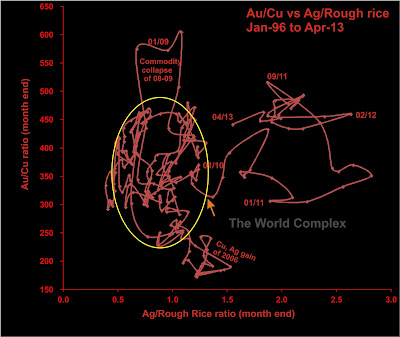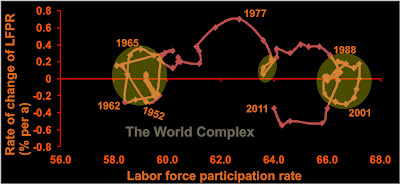Salon has an article on denial of science by mainstream society. The article asks why people deny the unpleasant truths that modern science has to offer--apparently preferring to chance of the impending hell of global warming and non-fluoridated drinking water.
The thing the authors don't understand is that the general public is not pushing back against the science per se. They like the science. Science gives them big, flat-screen TVs, Blu-Ray players, cars, airplanes, special effects, laptops with more computing power than ENIAC, the internet, and so forth. They love science.
They don't like authoritarians telling them what to do. So bugger off.
- - - - - - - - - - - - - - - - - - - - - -
Okay, I'm a little calmer now. There is another point in this entire discussion I would like to mention.
Past environmental issues have been dealt in a top-down, authoritarian fashion. Acid rain and ozone depletion were both attacked, with considerable success, by legislating against the sources. But this only worked because the main sources were few in number, easily tracked, and there were solutions available for the problem. CFCs were replaced by other coolants with less effect on the ozone layer, but this solution was only possible because the alternate coolants existed.
In earlier articles we have discussed the issue of multistability in the climate system. During periods of relative stability, negative feedbacks dominate, with the effect that the system appears to resist changes. The capacity for resistance to change is not infinite, and eventually a tipping point is reached, beyond which positive feedbacks dominate, leading to very rapid change. This idea would suggest that the climate system will resist changes to atmospheric composition for a time, which may be why there hasn't been the warming that was predicted by the IPCC models (pdf).
Governments would like people to stop emitting so much CO2 (through driving, power requirements, and industrial use). Well, alright then. 1) What replacement is there that won't significantly impact on lifestyle; and 2) has the government considered its role in the CO2 problem?
In an earlier article I discussed how the increasing number of disasters in the US is more a function of urban sprawl than any increase in frequency of natural events.
A big part of the reason that per capita CO2 emissions are higher in North America than in Europe is our urban structure--in particular the vast suburbs that surround most city centres. The big suburbs mean lots of people commuting, but the density of the sprawl is too low to favour high-capacity transit.
Big suburbs are only possible due to easy money. With no easy money, working families would not aspire to owning (alongside their bank) a huge home with a vast lawn and with neighbours within 5 m. Without easy money there wouldn't be two or three cars in the driveway.
Governments like this model of city development--it gives people hope, which helps keep the system going. Banks certainly like it--there's a lot of interest payments stretched out over 30 years, and until recently, people would practically starve rather than miss mortgage payments. People imagine they are happy, although I wonder what the future generations will think of people who willingly bought homes that took 30 years to pay for, instead of the more historically common few weeks to months. But I don't think the owners of these houses have done as well on the deal as the government or the banks.
So having created the template for massive CO2 emissions, the authoritarians wish to deny responsibility and shift the blame to their debt-serfs. Because the debt-serfs are refusing to absorb the costs, the authoritarians decry their denial of science.
If you really care about global warming, end the Fed.
The thing the authors don't understand is that the general public is not pushing back against the science per se. They like the science. Science gives them big, flat-screen TVs, Blu-Ray players, cars, airplanes, special effects, laptops with more computing power than ENIAC, the internet, and so forth. They love science.
They don't like authoritarians telling them what to do. So bugger off.
- - - - - - - - - - - - - - - - - - - - - -
Okay, I'm a little calmer now. There is another point in this entire discussion I would like to mention.
Past environmental issues have been dealt in a top-down, authoritarian fashion. Acid rain and ozone depletion were both attacked, with considerable success, by legislating against the sources. But this only worked because the main sources were few in number, easily tracked, and there were solutions available for the problem. CFCs were replaced by other coolants with less effect on the ozone layer, but this solution was only possible because the alternate coolants existed.
In earlier articles we have discussed the issue of multistability in the climate system. During periods of relative stability, negative feedbacks dominate, with the effect that the system appears to resist changes. The capacity for resistance to change is not infinite, and eventually a tipping point is reached, beyond which positive feedbacks dominate, leading to very rapid change. This idea would suggest that the climate system will resist changes to atmospheric composition for a time, which may be why there hasn't been the warming that was predicted by the IPCC models (pdf).
Governments would like people to stop emitting so much CO2 (through driving, power requirements, and industrial use). Well, alright then. 1) What replacement is there that won't significantly impact on lifestyle; and 2) has the government considered its role in the CO2 problem?
In an earlier article I discussed how the increasing number of disasters in the US is more a function of urban sprawl than any increase in frequency of natural events.
A big part of the reason that per capita CO2 emissions are higher in North America than in Europe is our urban structure--in particular the vast suburbs that surround most city centres. The big suburbs mean lots of people commuting, but the density of the sprawl is too low to favour high-capacity transit.
Big suburbs are only possible due to easy money. With no easy money, working families would not aspire to owning (alongside their bank) a huge home with a vast lawn and with neighbours within 5 m. Without easy money there wouldn't be two or three cars in the driveway.
Governments like this model of city development--it gives people hope, which helps keep the system going. Banks certainly like it--there's a lot of interest payments stretched out over 30 years, and until recently, people would practically starve rather than miss mortgage payments. People imagine they are happy, although I wonder what the future generations will think of people who willingly bought homes that took 30 years to pay for, instead of the more historically common few weeks to months. But I don't think the owners of these houses have done as well on the deal as the government or the banks.
So having created the template for massive CO2 emissions, the authoritarians wish to deny responsibility and shift the blame to their debt-serfs. Because the debt-serfs are refusing to absorb the costs, the authoritarians decry their denial of science.
If you really care about global warming, end the Fed.









